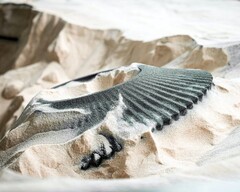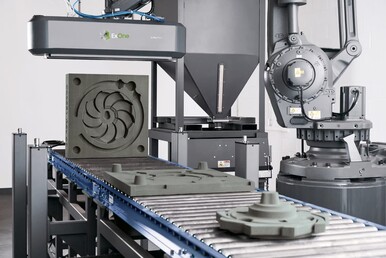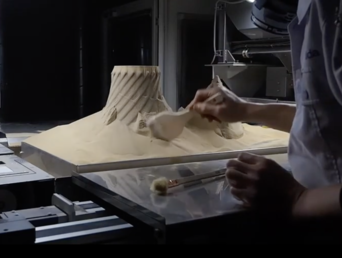
Anyone remotely familiar with 3D printing technology knows its biggest appeal: the ability to design and prototype multiple iterations of a part quickly and at low cost. Tesla, known as a company that uses disruptive approaches to solve production challenges, seems to have taken note of these benefits. Recently, we reported about its new ‘gigacasting’ process, which involves casting large, complex car parts as a single piece, instead of stamping and assembling it in several complex and costly steps. Sources behind the news revealed the difficulties of implementing this new process. It appears that 3D printers are at the heart of the solution.

The sand molds needed to cast large parts are too expensive to produce. Each one can cost as much as 4 million dollars, and each modification adds another $100,000. According to the sources, Tesla has been exploring a 3D printing technique called binder jetting to develop these molds. Binder jet printers use industrial sand to create a 3D shape. A liquid binder is applied in layers according to the digital design. This is similar to selective laser sintering (SLS), except that a binder agent is used instead of melting to turn the powder into a solid shape.


Each print only takes a few hours. This allows for prototypes to be tweaked many times. The cost of the whole design validation cycle, however, is only 3% of that of conventional methods. This reduces the time required for development from up to one year to as little as two or three. Tesla plans to leverage another important strength of 3D printing, the possibility of greater complexity in the model, since large structural parts often feature hollow voids to reduce weight and improve crash-performance.
Notably, BMW and Cadillac have already incorporated binder jetting into their development pipeline, using printers from Voxeljet. Similar machines are offered by Desktop Metal’s ExOne. While significant challenges remain in bringing gigacasting to the factory, with Tesla still working out the details, it’s safe to say that 3D printing continues to facilitate innovation across industries in new and unexpected ways.
Buy the ANYCUBIC Photon Mono X2 resin 3D printer on Amazon

I have always been fascinated by technology. But it was my passions for photography and music that drove me to explore audio and imaging technologies and learn about all the tools. I have degrees from both electronics engineering and business administration, and also worked as a marketing manager and software developer. Aside from being an amateur photographer and musician, I love reading books, spending time outdoors, cooking, and, most recently, running.




